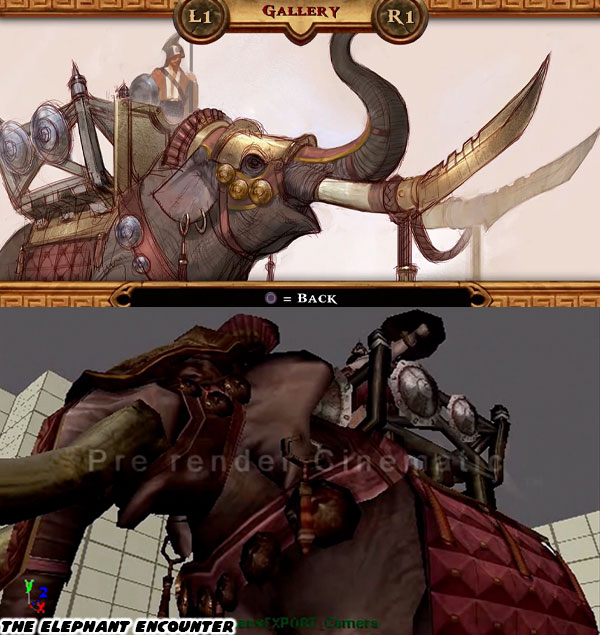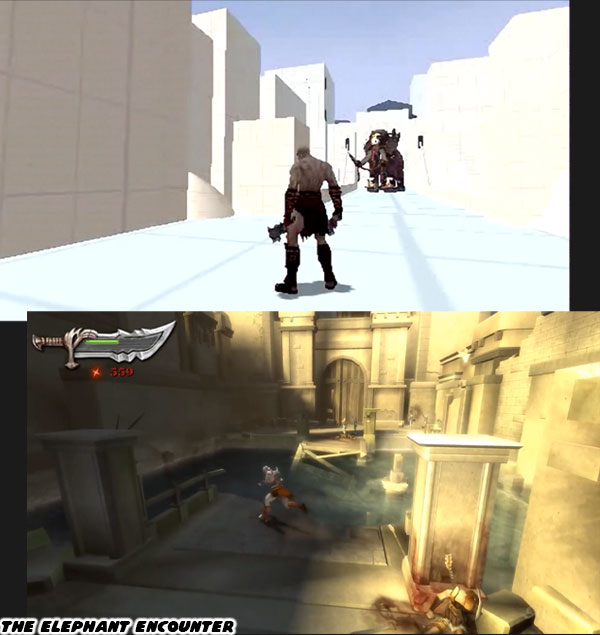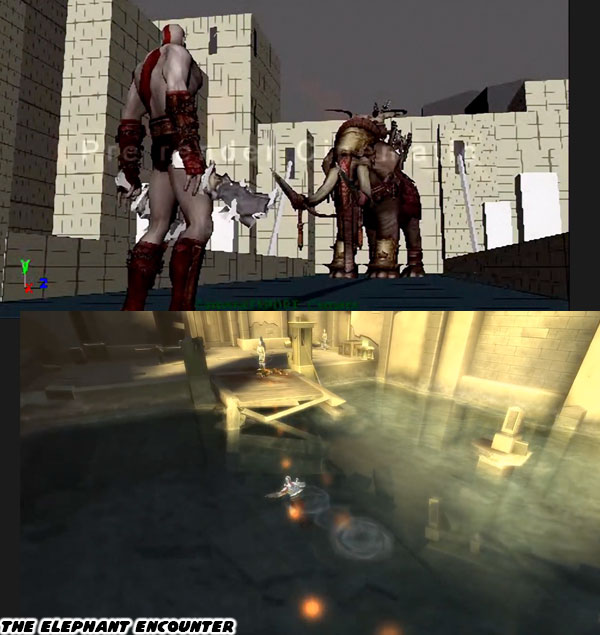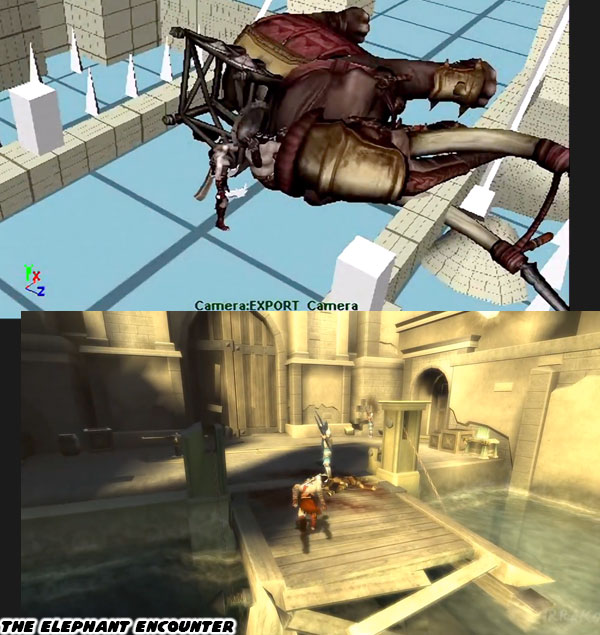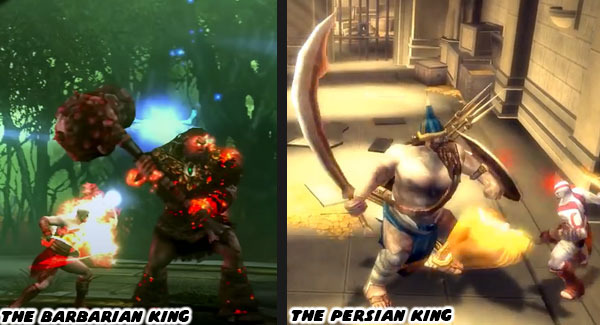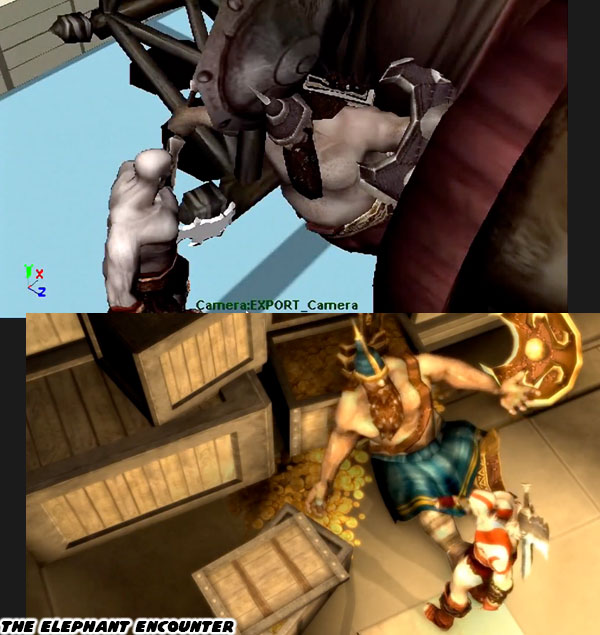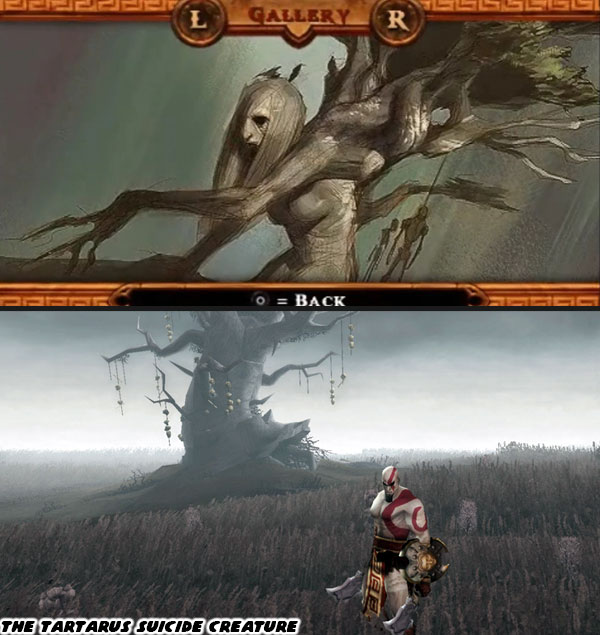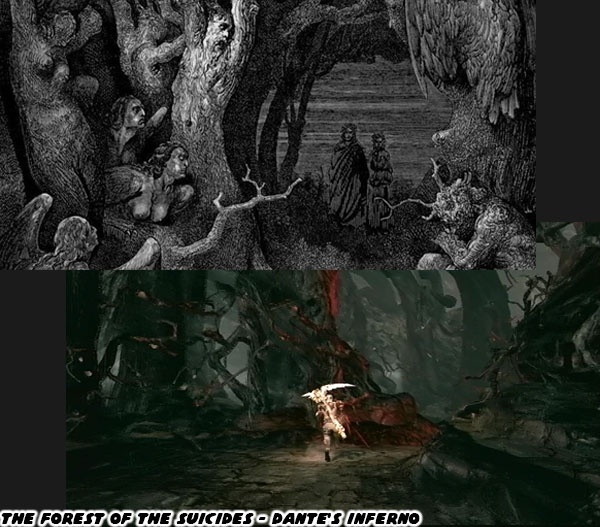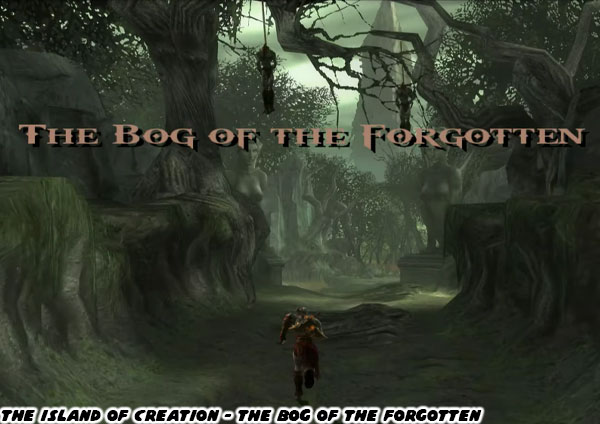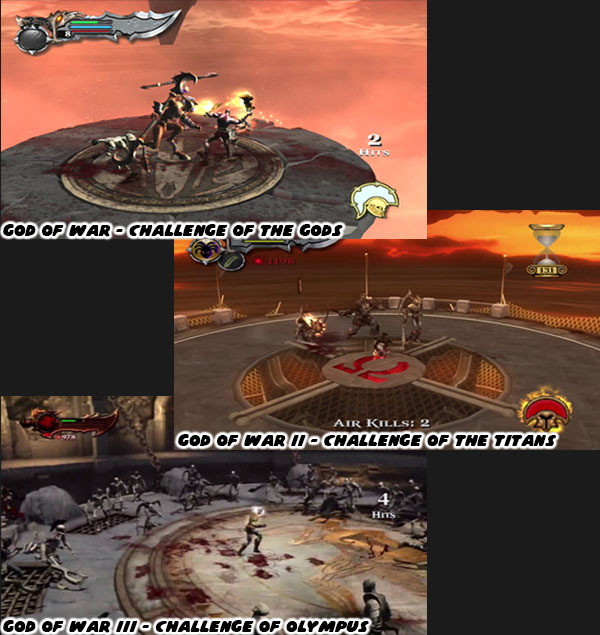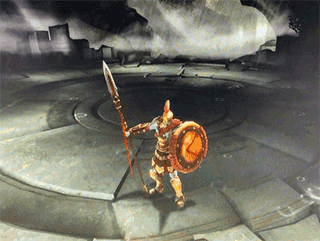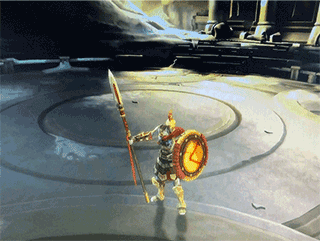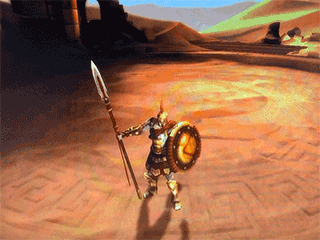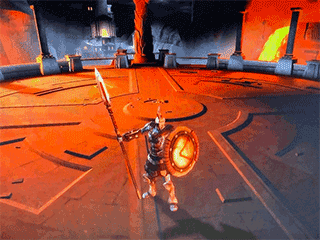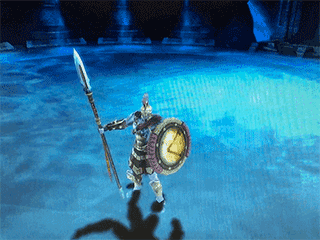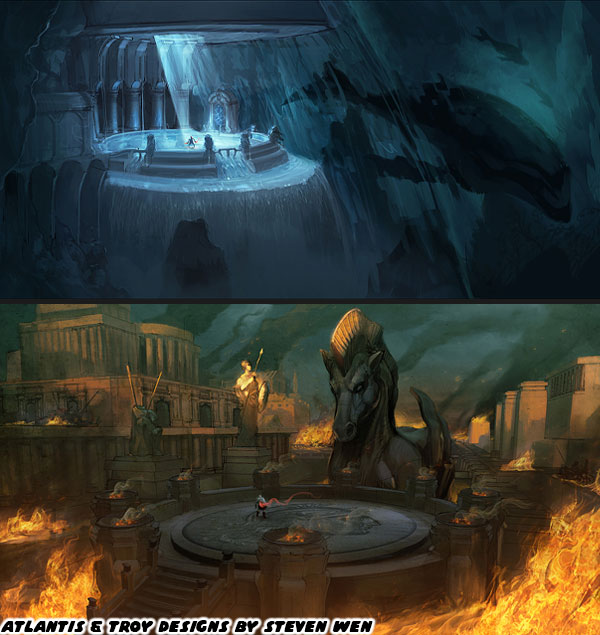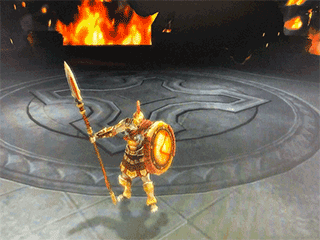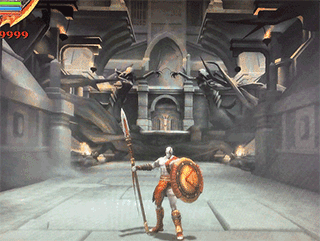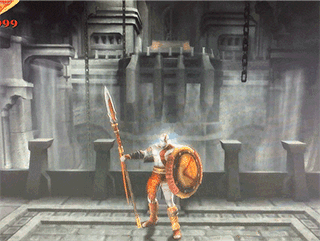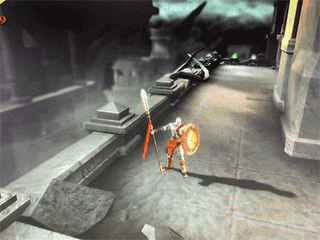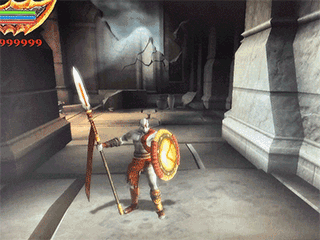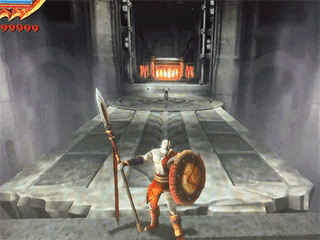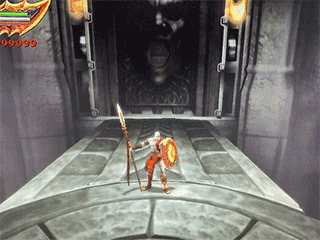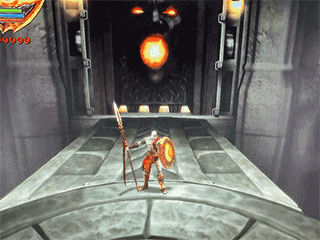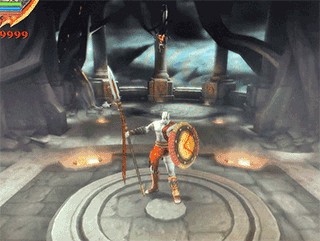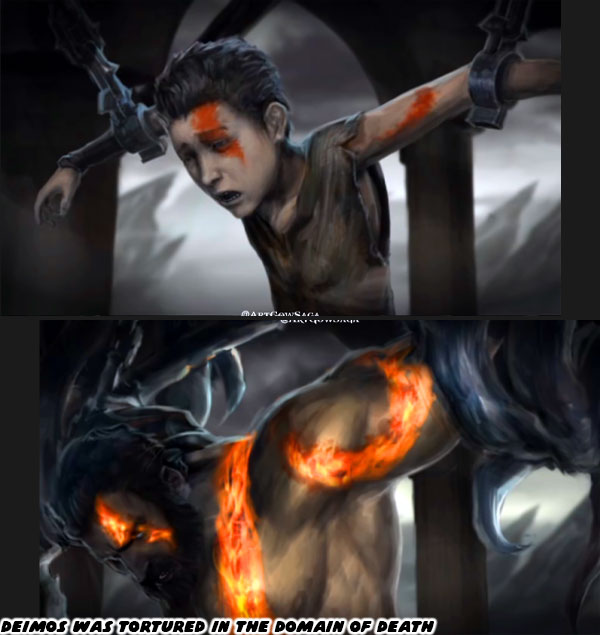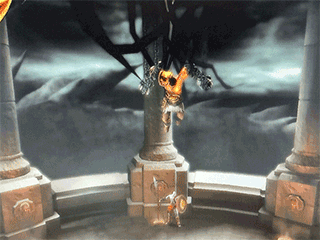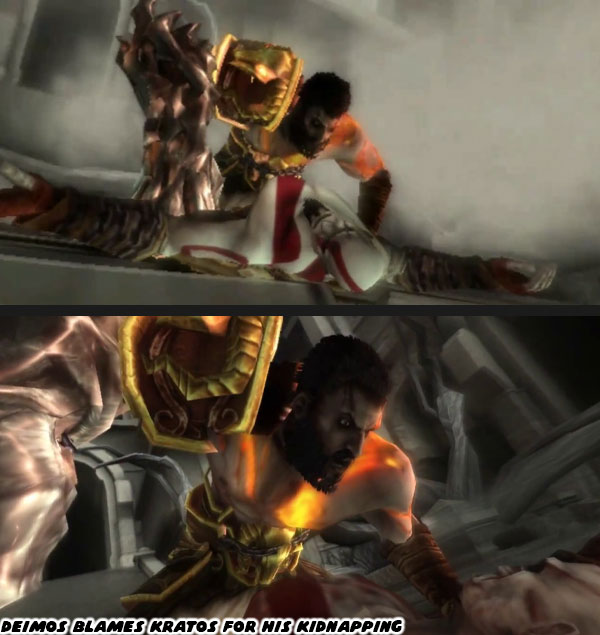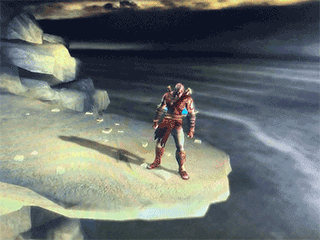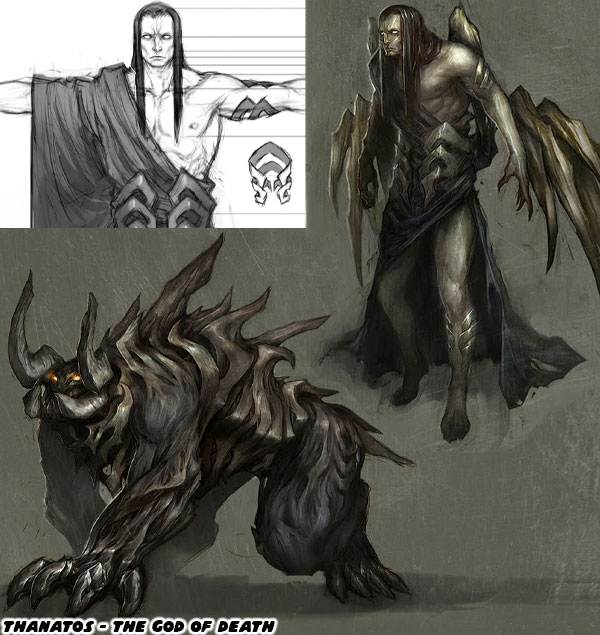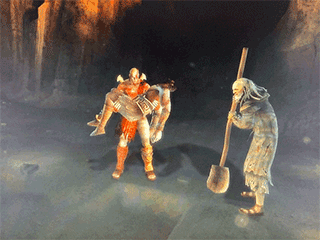In the previous blog we covered Kratos’ battle with Erinys the daughter or death, his arrival at Sparta, and the fight with the Piraeus Lion. Kratos is trying to find out what happened to his brother Deimos. He was taken as a child by Ares, and assumed killed. On her deathbed Callisto the mother of Kratos, and Deimos says the truth is found within the Temple of Ares. Kratos takes a secret passage through the Jails of Sparta, and climbs out the other end. He is now at the Mounts of Laconia. Once agains the team at Ready at Dawn Studios created a unique environment for the game. It had its own weather, and color scheme. The hills were a deep clay red. Kratos scales the breezy peaks at dusk.
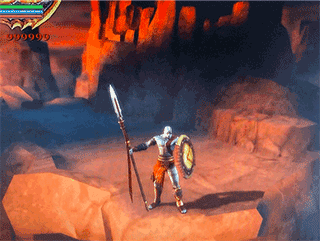
He arrived at the Temple of Ares just at nightfall. We could see Spartans pulling down a statue of Ares. The leader of his men told Kratos that they would soon be erecting a new statue in his honor. Kratos went into the temple, where the visage of Ares said to face himself, and learn the truth. Kratos went behind the throne reserved for Ares, and discovered a polished black stone, perhaps onyx. In its reflection he could see himself as a young man, he had no tattoos, and without the Blade of Athena.
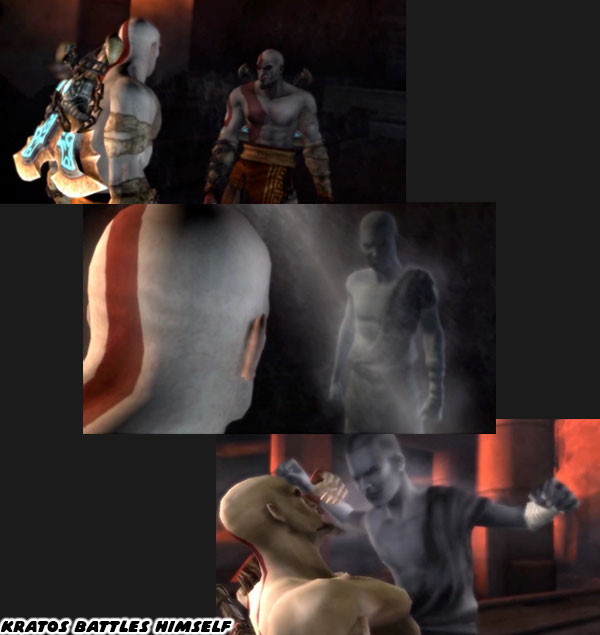
The younger version tries to pull him into the mirror. The two have an ugly fight. The younger reflection hurling insults at the god of war. Saying that he didn’t protect his brother, that he was a coward, that he abandoned him. Kratos gets the upper hand, shatters the wall, and forces the reflection back into the rock. Inside he discovers the source of its magic. There is a skull of a creature, it has horns, and larger than a human skull. It is the Skull of Keres, in Greek mythology the goddess of death. Kratos now realizes that he has to return to Atlantis, or what’s left of it.

The Spartan leader in charge of demolishing the statue of Ares returns to Kratos, and gives him the spear, and shield that once belonged to him. These weapons were treated with great care, and respect, with the hopes that they would be returned back to the god of war. He seems to know that the next part of the journey is going to be the most dangerous portion yet.
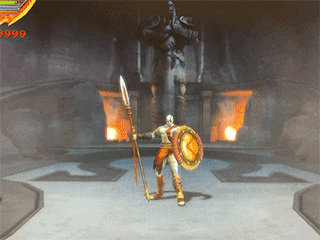
As Kratos begins his travel through the Mounts of Laconia, and returns back to the Mounts of Aroania he comes across a frozen path. Inaccessible from a strong wind that freezes everything in its ascent. Kratos uses his shield to push against the wind. He reaches the source of the blizzard. It is the Shrine of Boreas. Frozen into the ground is the Horn of Boreas, the third, and final magic that he unlocks on his quest. Kratos can swing it overhead, and freeze his opponents. It is very similar in function to the Gorgon heads that he could use in previous games, except instead of turning to stone the enemies turn to ice, and can be shattered.

Kratos descends into the Canyons of Sorrow. We are starting to get close to Crete, and the still erupting Methana Volcano. We can see the sky starting to change from deep blue to ash. There is a path through the Canyon that is criss crossed with lava flows. Here we find the Rivers of Lament. We also discover a strange skinny man climbing through the caves, and telling the Spartan to stay away. As we follow him we find some items made of solid gold. There is a young woman face down in the earth, she is made of gold. We see ropes, and handprints along the walls made of gold as well. Even a few enemies are frozen in gold. The strange man is King Midas, and he is lamenting turning his daughter into gold. He was cursed by Dionysus with this power, and is clearly going mad. There is not a clear path through the Rivers of Lament so Kratos decides to end the king’s suffering, and make a path at the same time. He drags Midas against his will and hurtles him into a lava fall. It instantly turns to gold, with Midas trapped within.
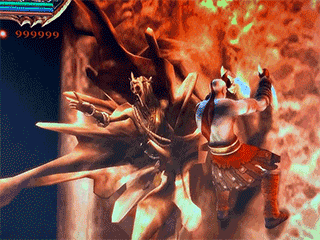
It was a brilliant crossover with the classic tale of King Midas. Kratos came across all sorts of other fabled characters in his adventures, including Medusa in GoW, and Icarus in GoW II. Kratos makes it to the Port of Atlantis. In the distance we can see an enormous whirlpool, a collection of rocks, and a sunken city. Kratos takes his men, and sets sail to the heart of the whirlpool. The trip is very dangerous. Triton warriors continuously to leap into the ship the closer we get to The Vortex. Harpies, and lightning bolts start pelting the crew from above. The ship begins to speed up as it gets closer to the city. The ship gets dangerously close to the rocks on the edge of the whirlpool when a lightning storm breaks the mast, and hull apart. Kratos gets swept overboard, and pulled into the heart of the city.
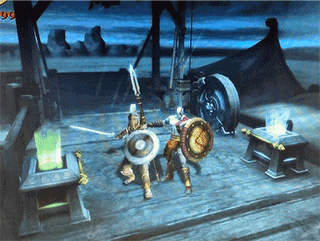
A broken statue of Poseidon is cursing the Spartan. He vows that Kratos will pay for destroying his city, and condemning his worshipers. The Ancient City of Atlantis is breathtaking level design Even as it is deteriorating we can tell that it is surprisingly advanced. Water seems to be completely under the command of the magic, or technology powering the city. Between several columns we can see that we are underwater, a magical barrier keeps the pressure of the deep away. Atlanteans are running in terror, fearing that they have been abandoned, and their glorious city has come to ruin.
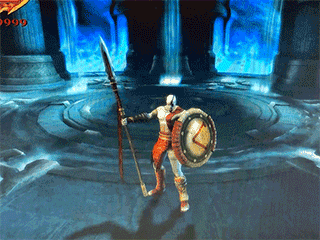
We get to the heart of the city, a place called the Nexus of Atlantis. It is the center of the whirlpool, and we can see four enormous statues of Poseidon are braced against the forces of the ocean. The sea is cascading in massive sheets over their shoulders, and yet somehow it never fills up the Nexus. The Death Gate is opposite of Kratos, however the bridge connecting it to the temple will not rise. The four statues of Poseidon are mechanized, but something is blocking them from raising the bridge. Kratos has to travel in, around, and under the Nexus in order to complete his mission. We swim through massive tunnels. We see enormous mechanisms, pumps, culverts, and drainage channels keeping the city from filling up completely. The forces under the Nexus are powerful enough to sweep away the god of war. He has to use all his strength, and pull himself along with the Blades of Athena in order to navigate the tunnels.
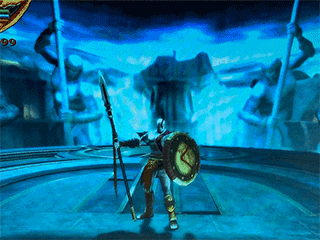
The City of Atlantis, Ruins of Atlantis, and especially Nexus of Atlantis are some of the most amazing environments ever featured in the GoW series. At the start of the game we get a glimpse of the Port of Atlantis, how it appears in its prime. Following the eruption of the Methana Volcano the top layers are broken off, and what we see is the oldest parts of the city. Like other ancient civilizations we discover that the Temple of Poseidon was built on top of older ruins. Surprisingly even the Sunken City of Atlantis has technology, to keep the ocean from swallowing it whole. This was part of the mythology behind the legends that created Atlantis. Sony Santa Monica had plans for Atlantis going all the way back to the development of God of War II.

Concept artists Cecil Kim, Charlie Wen, and Stig Asmussen came up with the earliest plans for the fabled city. The studio was looking at the stage as one giant vertical encounter. It was going to exist between the Isles of Creation, and the Spire where the Sisters of Fate lived. In the earliest drafts of the game the Isles of Creation was a gigantic volcano. The front portion was a bog, similar to how it turned out in GoW II. The heart of the island was an underground city that Kratos would have to navigate. From there it would be a series of paths, and encounters in order to reach the base of Atlantis. This was very similar to how the Caldera, and Volcano Core of the Methana Volcano turned out in the Ghost of Sparta.
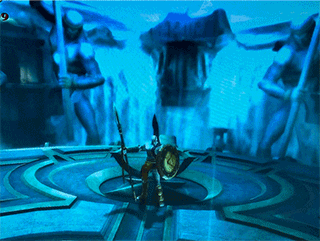
Sony Santa Monica had worked three or four months creating models, levels, and stage designs for Atlantis. Kratos would swim swiftly by following a deep sea current, similar to the East Australian Current scenes from the movie Finding Nemo. He would cut through a series of caves, as well as use portals to get him closer to the middle of the city. Players could see the size, and breadth of the city from magical barriers where water couldn’t enter the buildings he walked through. What made the stage truly special was that the Tower of Atlantis. It rose from the sea floor through a hole in the ocean. There were no rocks separating the ocean from the tower. It was some form of magic that kept the elements apart. From a below it appeared as if it was raining underwater. The tower had its own waterfalls cascading from the various levels. A completed stage would have undoubtedly looked as amazing as what Ready at Dawn Studios had delivered.
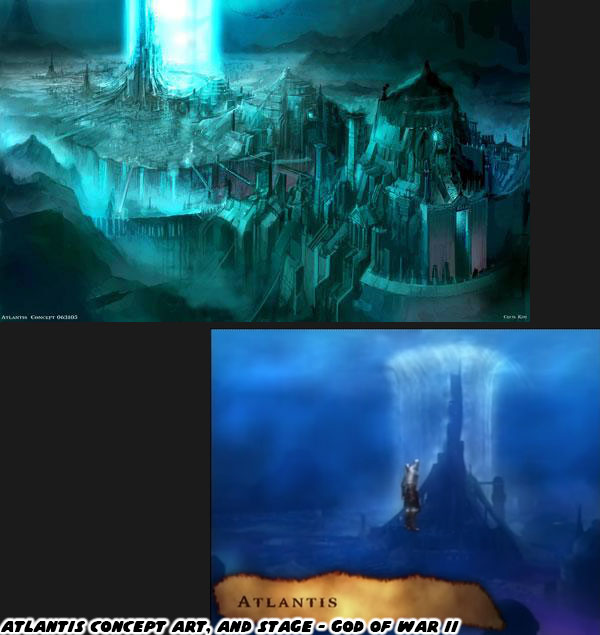
What many GoW fans never realized was that there was actually a part of the stage completed. Members of the team that got a chance to play through it lamented that audiences would never know what it was like.
The Playstation Blog actually shares a page from the design document showing the game play specifically for the Atlantis Tower. Along the way to the top players would be teased a boss encounter. We would be able to see the Kraken circling the tower from the ocean side of the waterfall. As Kratos reached the top it would leap out of the water, and land on a platform. You would have to defeat it, and then reach the Pegasus (and not the Phoenix), perched on top in order to continue onto the Sisters of Fate. This idea was so well put together that Sony Santa Monica would revisit it in God of War Ascension. But that is a blog for another day.
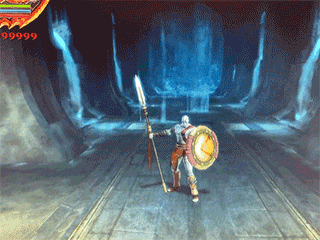
In the Ghost of Sparta we have a version of Atlantis that is every bit as fantastic as the earlier concepts. However it is a hybrid magical technology that allows the Atlanteans to master the ocean. We saw it with the first magical weapon Kratos picked up, the Eye of Atlantis. But we also see it in the city proper. The water in various portions is electrified. The electricity can be harnessed to run the pumps that keep the water from flooding the city, and generate a barrier to keep the ocean from crashing inward. That electricity, and not Poseidon is what struck Kratos, and his ship as he approached the whirlpool. Electricity powered the statues of Poseidon as well.
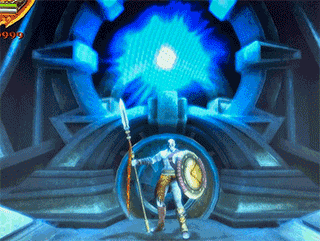
Kratos is able to steal a gear from an Automaton, and repair the statues that were blocking the bridge in the Nexus. When he returns he is able to use the Eye of Atlantis to power all four statues. In doing so they raise the bridge leading to the Death Gate. The game actually manages to go full circle. Which was something that made me extremely happy. When the adventure started we saw the Death Gate underneath Atlantis. It existed before the city, and even before the Olympians. The gods had enough reverence to the Primordials as to not mess with them, or their temples. They instead built around these places. The next time we saw it all of the Atlantean construction had been stripped away. Only the bridge, and portal itself remained.
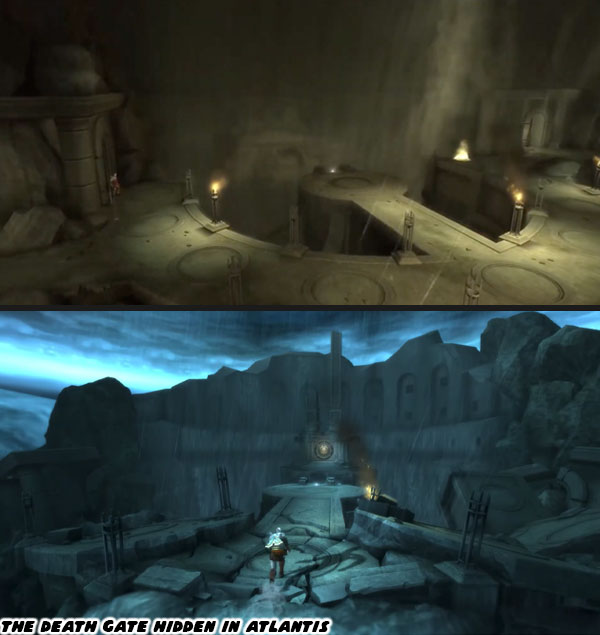
The only way to reach, and activate the gate was by using the magic of death. Kratos used the Skull of Keres as a key. It would allow him to travel to the realm of death. This place was not the same as the underworld controlled by Hades. This was a place of true death for mortals, and gods alike. The final part of the Ghost of Sparta would have us visit the unknown, and see if Kratos could find his brother. I’m going to dig into that on the next blog. Until then I’d like to know which part of the game you liked best so far. Was it Atlantis? Was it the mountain stages? Let me know in the comments section please. As always if you would like to sponsor me
please visit my Patreon page and consider donating each month, even as little as $1 would help make better blogs and even podcasts!
